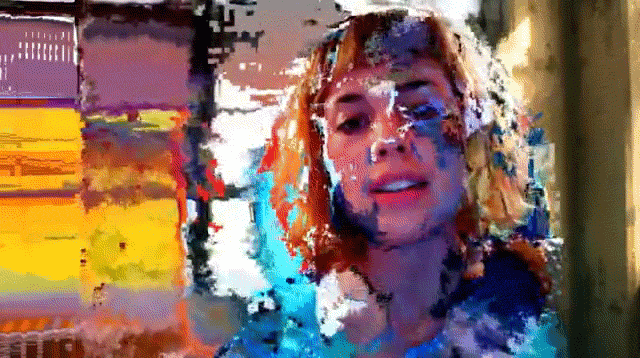

It all kinda happened by accident while I was distracted… Hope you enjoy.

The idea came out of some R&D that I was doing for a current collaborative live video thing I’m working on, and the implementation from some random notes on websites scattered around the internets. Another excuse to dance in front of your computer, or a way to convince others to do so. I recently posted a couple of Jitter patches and shaders that implement a really basic optical-flow based distortion effect (think realtime datamosh, among others) on the Jitter forums: This is a Jitter patch, but would be simple enough to port to code for Processing, FreeFrameGL (which implements shader code), or other tools, too, in case you can’t bear being away from your moshness. (For a simpler example that looks more like the compression artifact technique we’ve seen recently, have a look at the second video – though, personally, I like the more sophisticated, layered approach of the video at top. Andrew Benson of Cycling ‘74 has only just begun playing with this in Jitter using GLSL shaders, and already the results are really compelling. More recently, Darren Aronofsky's "Black Swan" (2010) features numerous extreme closeups of Natalie Portman's character's face and body to emphasize the physical and psychological toll of her role as a ballerina.Motion distortion 2 from andrew benson on Vimeo.ĭatamosh? (The “forbidden” but harmlessly meaningless word?) Video squishification? Mushy data?Ĭall it what you will, but applying real-time distortion and displacement to video so that video textures become flowing layers of pixels looks absolutely beautiful.

This shot not only establishes the characters but also sets the tone for the film's intense and gritty atmosphere.Īnother example of extreme closeups in movies can be seen in Martin Scorsese's "Taxi Driver" (1976), where the camera lingers on Robert De Niro's character's eyes throughout the film to convey his troubled and unstable state of mind.

One of the most famous examples of extreme closeups in movies is the opening shot of Sergio Leone's "The Good, the Bad and the Ugly" (1966), where the camera zooms in on the eyes of the three main characters in extreme detail. This shot typically focuses on a part of the character's face or body, such as their eyes or mouth, to create a sense of closeness with the audience. Extreme closeups are a common technique used in movies to convey intimacy, tension, and emotion.


 0 kommentar(er)
0 kommentar(er)
